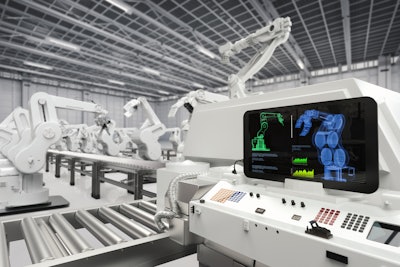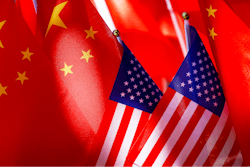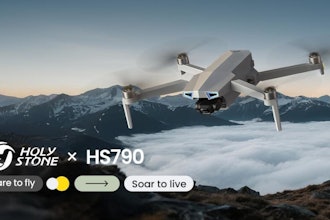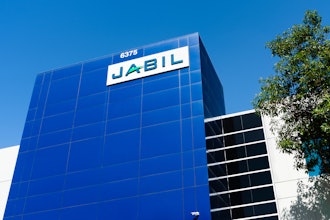
The Industrial Internet of Things has unlocked a number of opportunities that the manufacturing sector can now leverage in streamlining operations, improving quality and cutting costs. However, perhaps the most unique benefit of the IIoT has been the ability to customize the application of these technologies according to the needs and preferences of a specific enterprise - even as the number of solutions falling under the scope of IIoT continues to expand.
To discuss one such example, IEN recently sat down with John Fryer, senior director of industry solutions at Stratus, to discuss best practices for leveraging IIoT capabilities with Edge Computing strategies.
Jeff Reinke, IEN Editorial Director: The concept of a connected enterprise has been around for a while, but what do you think were the driving factors that brought the term “Internet of Things” into manufacturing’s lexicon?
John Fryer, Senior Director of Industry Solutions, Stratus: Firstly, we should not forget that “connectivity” and “analytics” have been key components of industrial automation implementations since the first uses of digital controls over 40 years ago. PLC’s have been used to control plant floor activities in many industries, but often in isolated silos. The key elements of the “Internet of Things” are ubiquitous connectivity, almost unlimited computing power and advanced analytics, often using machine learning and artificial intelligence technologies.
The advent of the Internet has driven exponential growth in digital connectivity, primarily in human to machine interaction. In recent years, this has been extended to machine-to-machine interaction and the introduction of machine learning to enable automated control of “things”. Perhaps the best examples are self-learning thermostats in homes, which can also be connected to safety systems, such as fire alarms.
Providing plant-wide connectivity with standard technologies, such as Ethernet (or variants) and using the Internet Protocols (IP) enables interconnection of disparate systems, both within the plant, and between plants and Enterprise systems. This makes it easier to deploy additional computing power at the Edge, within a plant, or in the Cloud, and to apply analytic and machine learning technologies to improve a whole range of production and business processes.
JR: Just to provide some clarity, how do you define Edge Computing?
JF: Edge computing is a somewhat abstract term that places compute resources at the network’s edge – at or near where production processes are occurring – that allows for real-time decision making to optimize efficiency, productivity and quality. Edge computing takes on real meaning when defined in context to its application.
This could mean applying edge computing to an individual production line, perhaps even individual machines within a line, or even across multiple production lines or facilities. It could even apply to inter-connecting production lines of processes that were once served by manual recording data at one place and entering that data at another location. The real point is applying compute technology where specific benefits can be derived for a business.
JR: What factors do you think will continue to make Edge Computing a priority for manufacturers?
JF: The tremendous potential the edge offers for increasing business efficiency and agility will continue to drive this trend forward, especially due to the ability to perform real-time analytics on the plant floor. The possibilities for optimizing operations are endless, so we will see a lot of new use cases emerging. Some near-term, key applications are real-time process control feedback, real-time quality inspections and device failure prevention, which could include graceful shutdown before the intervention of safety systems.
JR: It seems that investing in connected technologies is becoming more about figuring out where to start. So what advice would give to those looking to make smart IIoT investments?
JF: I would agree. The best approach to the IIoT/edge journey is an evolutionary one, with each stage building on the last. These steps generally include: modernizing industrial control systems, connecting systems, enabling real-time analytics and automating industrial control.
Starting small with limited proof-of-concept projects is a great way to show value quickly. These can then be expanded upon into bigger projects. The trick here is make sure that you understand how to scale a proof-of-concept. Make sure to understand both the technical challenges that come with scaling, such as connectivity, bandwidth, latency, compute power/storage and the cost implications.
JR: The silos between IT and OT are beginning to break down a bit. What are your thoughts on how to get these two sections of a manufacturing enterprise working together more closely?
JF: Achieving the full potential of the IIoT means bridging the gap between the two cultures of IT and OT so that the competing priorities of each are met. We’re beginning to see the emergence of a new breed called the “hybrid OT” or “industrial IT” professional who bring a combined IT/OT perspective to the enterprise, with the right skillsets to manage an optimized IIoT operation.
These hybrid OT professionals will need to understand that for IIoT/Edge implementations to be successful, they must focus on solutions that are always available, as well as operationally simple. As Edge computing proliferates and the criticality of the applications they support increases, it will be impossible for OT/IT to easily reach all systems in the event of a failure. It is important that these (remote) systems be self-protecting, self-diagnosing and easily maintained and serviced by non-IT/OT professionals without downtime.
JR: Looking at all the new and intriguing technologies associated with the IIoT, is there one that might be getting overlooked but could have a bigger impact in the next 5 years?
JF: If there is one area that is worth watching, I think it is the application of augmented reality technologies. One of the biggest challenges facing the industrial automation world is the retirement of the older generation of workers. Trends in offshoring and the economic downturn in 2008 left the industrial automation world with a dearth of new professionals entering the industry. When the current generation of automation engineers retires, the institutional knowledge related to any given implementation leaves with them.
The new generation of engineers entering the automation industry is well educated, but they simply don’t have 20-30 years of maintaining and improving plant operations. Capturing the accumulated knowledge of experienced engineers, harnessing this with machine learning/AI, and being able to present information in real-time via AR can potentially help to fill the knowledge/experience gap.
This could be in the form of checklists of things to do, how to perform them and ideas of other areas to investigate. Distributing such information to strategically placed Edge computing systems for machines, production lines or other significant operations areas could provide valuable diagnostic information and offer potentials solutions to explore.This may appear very futuristic, but prototype systems have already appeared and in some form, this could be a glimpse of what is just over the horizon.
For more than 35 years Stratus has proactively worked with companies in the data center and at the edge to prevent unplanned downtime. For more information, visit www.stratus.com.






















